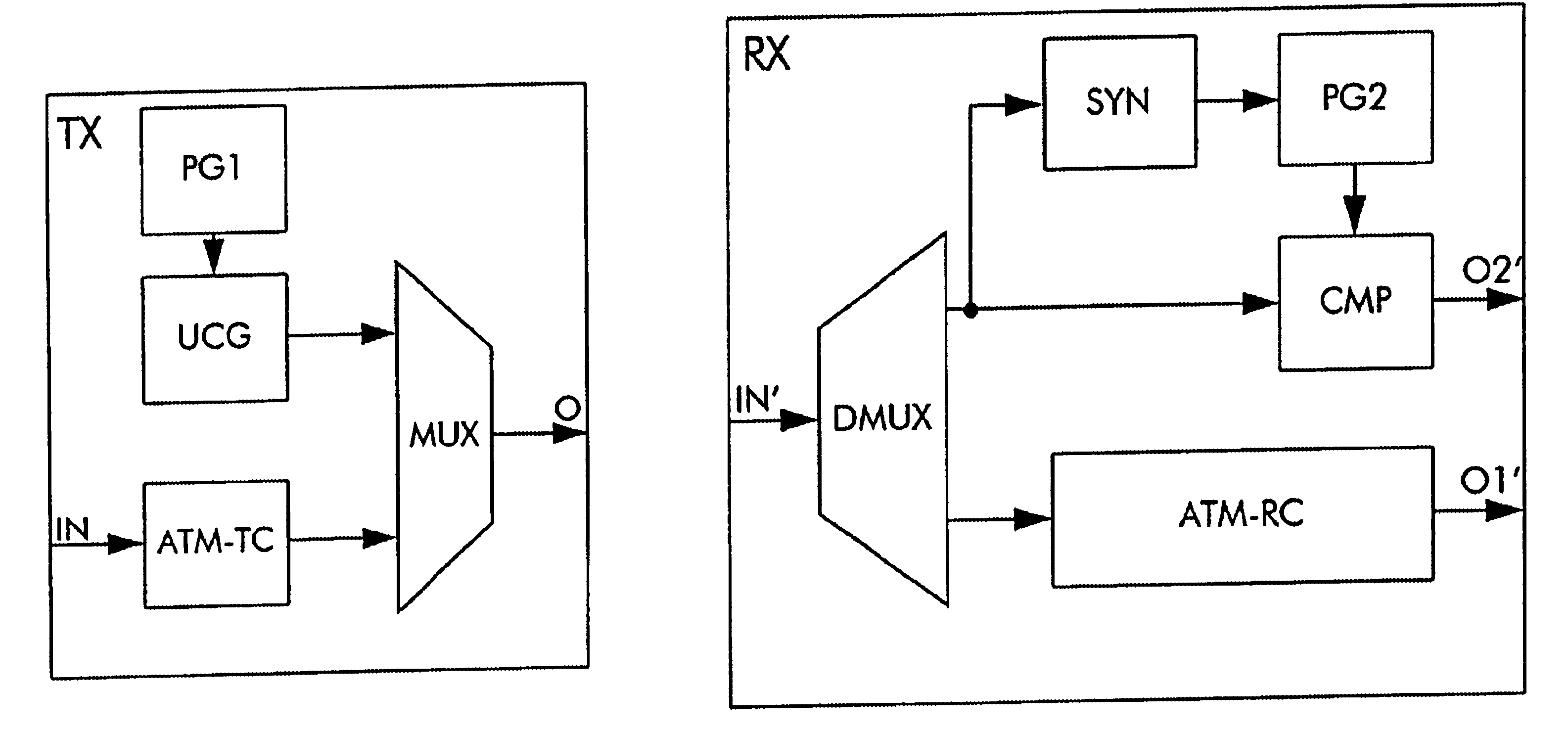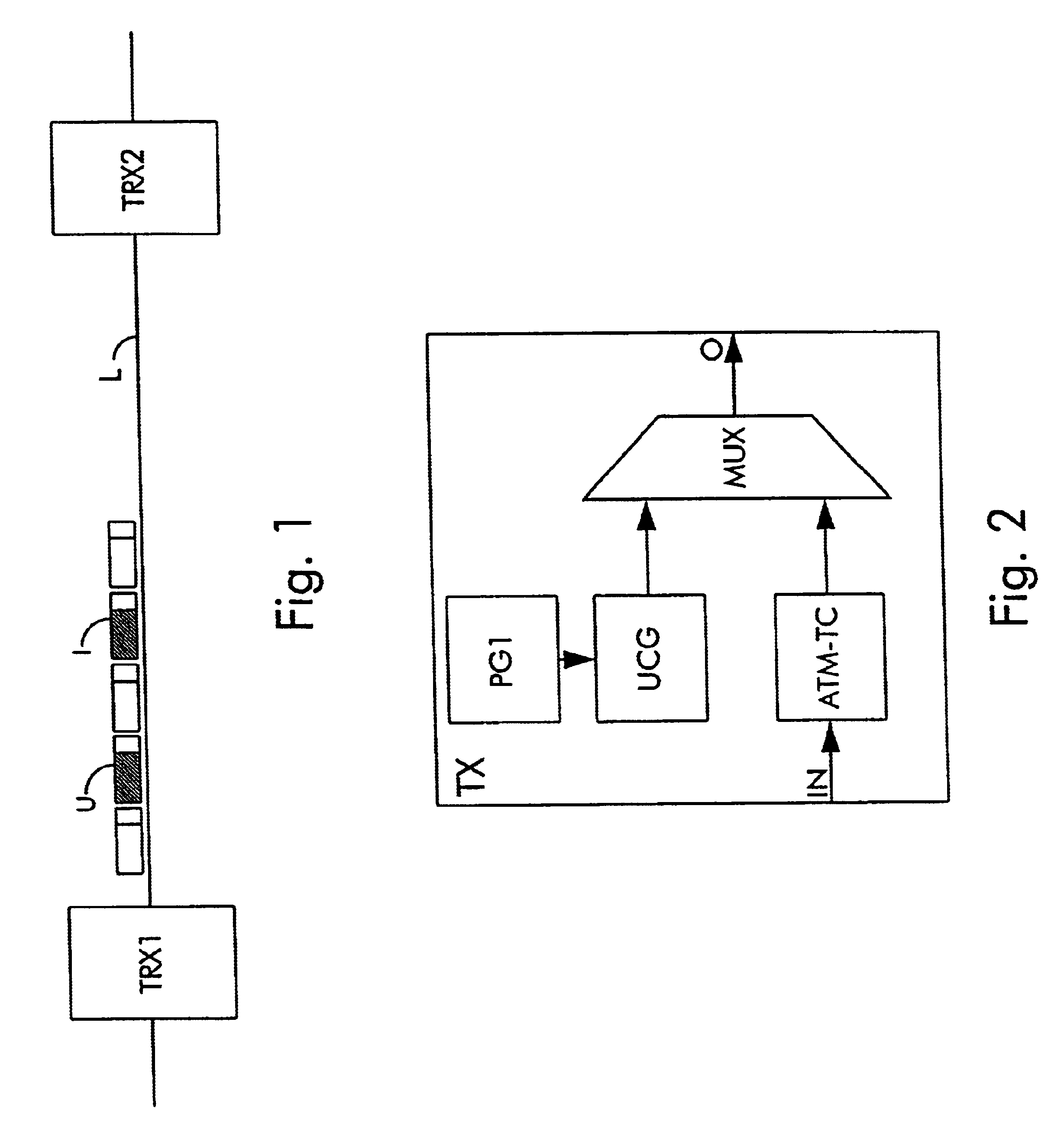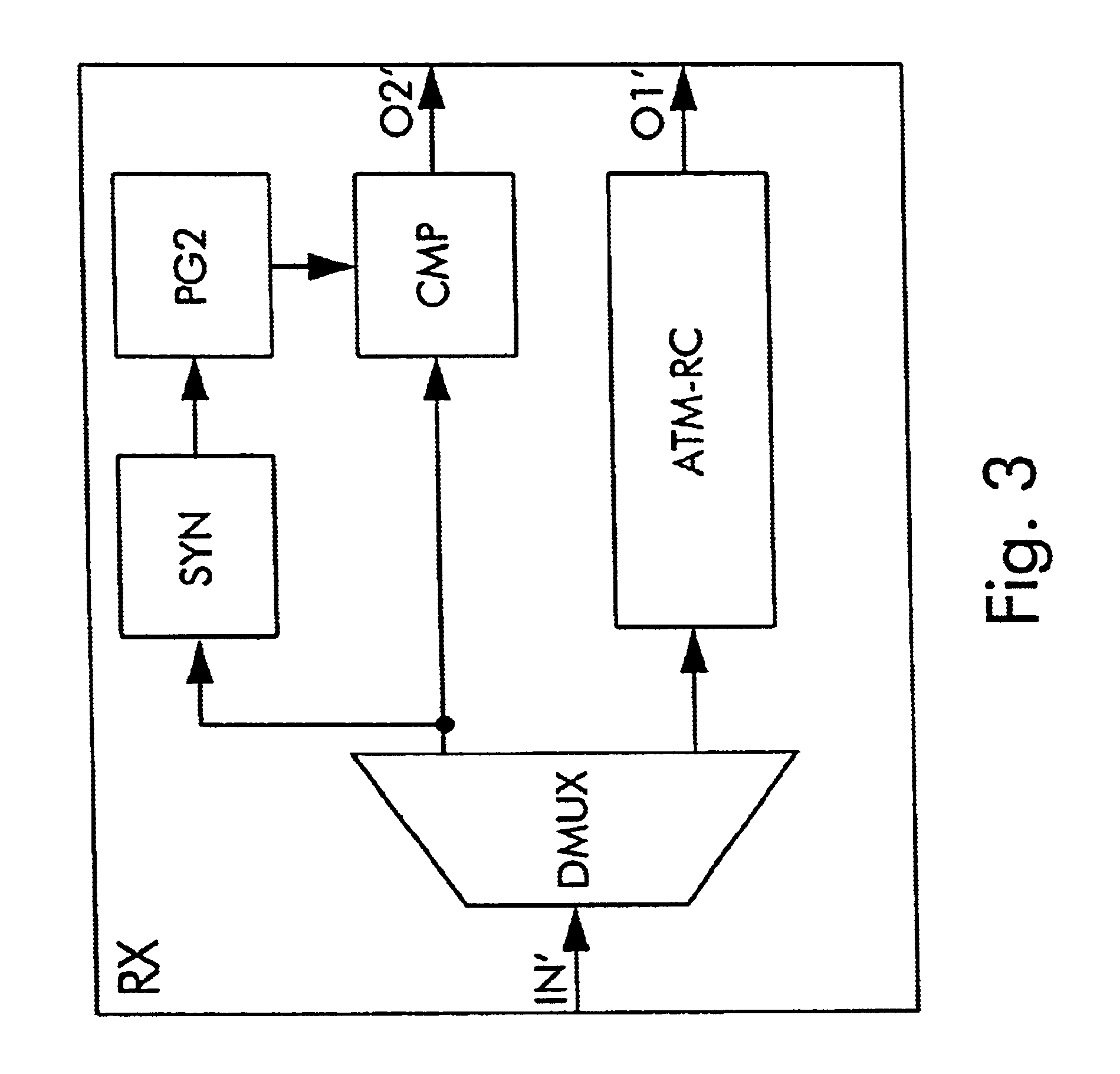Method for bit error rate measurements in a cell-based telecommunication system
- Summary
- Abstract
- Description
- Claims
- Application Information
AI Technical Summary
Benefits of technology
Problems solved by technology
Method used
Image
Examples
Embodiment Construction
FIG. 1 shows a schematic communication link between a first transceiver TRX1 and a second transceiver TRX2 in a cell-based network, e.g. an ATM-Network.
Both transceivers TRX1 and TRX2 are interconnected via a physical transmission medium, for example an optical fibre cable, or via a wireless transmission path represented here by link L.
The information transferred between the first transceiver TRX1 and the second transceiver TRX2 is packed in cells of fixed or variable length. These cells typically have an overhead section wherein control, management and routing information is embedded, and a payload section, carrying user information.
Cell-based telecommunication systems comprise for example ATM (Asynchronous Transfer Mode) communication networks. ATM cells for instance have a fixed length of 53 bytes , 8 bytes of which constitute the overhead section or the so called ATM cell header, reserved for overhead information.
The cells are transmitted via link L either from the first transce...
PUM
 Login to View More
Login to View More Abstract
Description
Claims
Application Information
 Login to View More
Login to View More - R&D
- Intellectual Property
- Life Sciences
- Materials
- Tech Scout
- Unparalleled Data Quality
- Higher Quality Content
- 60% Fewer Hallucinations
Browse by: Latest US Patents, China's latest patents, Technical Efficacy Thesaurus, Application Domain, Technology Topic, Popular Technical Reports.
© 2025 PatSnap. All rights reserved.Legal|Privacy policy|Modern Slavery Act Transparency Statement|Sitemap|About US| Contact US: help@patsnap.com



